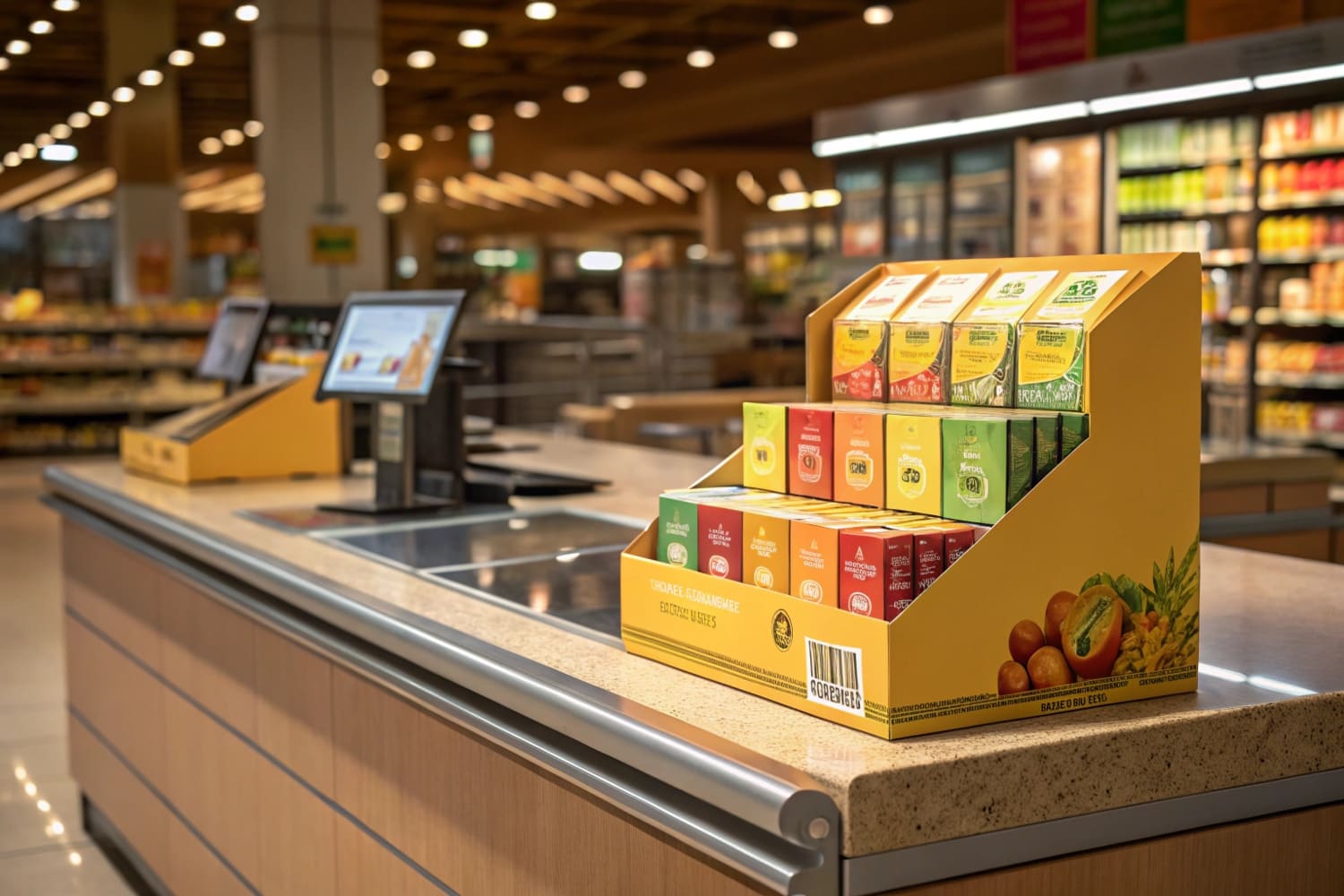Shoppers ignore clutter, sales fall, I worry; the wrong display buries great goods. I test, refine, and reveal styles that pull eyes and profit back in.
The best display style aligns product size, customer goal, and brand story, balancing visibility with easy reach. Measure dwell time, tweak spacing, and let data—not guesswork—decide.

Every aisle tells a silent story. Stay with me and learn how clear lines, bold prints, and real testing turn cardboard and shelves into growth machines.
What type of displays seem to be more attractive to customers?
Crowded shelves feel like homework, so buyers stroll away. Their problem is choice fatigue. I press pain with numbers, then offer a display that edits options and guides the eye.
Customers favor tidy, theme-driven displays that frame one clear offer, show price fast, and invite touch.

Focus on Visual Hierarchy1
I keep the hero product at eye level. Support items flank it like bodyguards.
| Layer | Goal | Action Tip |
|---|---|---|
| Top | Inspire | Show lifestyle graphic |
| Middle (Eye) | Convince | Front-face hero item |
| Bottom | Upsell | Stack bulk or refills |
Color and Contrast2
I limit palette to three brand colors. High contrast stops the glance. My factory prints with delta-E <2 to avoid ugly shifts that scare buyers.
Motion and Light
Small LED strips under the shelf edge create movement. Light amps cardboard without big cost. I test dwell time; even ten extra seconds raises conversion.
Social Proof3
I add a QR code that shows a short clip of Barnett hunters hitting targets. This content lives online, yet the code drives offline lift.
Reality Check
I measure attraction rate: total passers versus stoppers. If under 18 %, I adjust angle or header text. Simple math beats gut feel.
What is the best way to display merchandise?
Many sellers toss items in bulk bins. I did once and watched returns climb. The issue: no path or story. My fix: map flow, lead eye, close sale.
Group by use case, place high-margin lines at grip height, and keep paths open for strollers or carts.
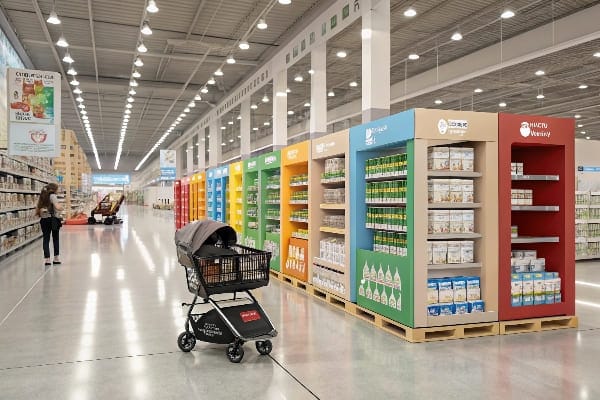
Layout Zones
| Zone | Product Type | Rule |
|---|---|---|
| Decompression4 | Low cost, fun | Spark impulse |
| Core Path | Flagship | Tell brand tale |
| Power Wall | Seasonal | Rotate monthly |
By marking zones with floor tape during setup, I keep staff aligned.
The Power of Reach
I place heavier crossbows at hip level since lifting above the shoulder hurts. Light arrows go higher. This ergonomic logic5 cuts damage and raises try-on.
Signage Simplicity
Fonts stay 48 pt or larger. One benefit per sign. Shoppers skim; I respect that.
Test and Rotate
I swap display order every 30 days. My line records units per facing. If velocity falls, we A/B the plan6. Data, not ego, leads.
What is an effective display?
An effective display sells when staff is busy. That is the pain. I build one that answers questions before they form.
Effective displays clarify need, prove value, invite action, and survive heavy hands.
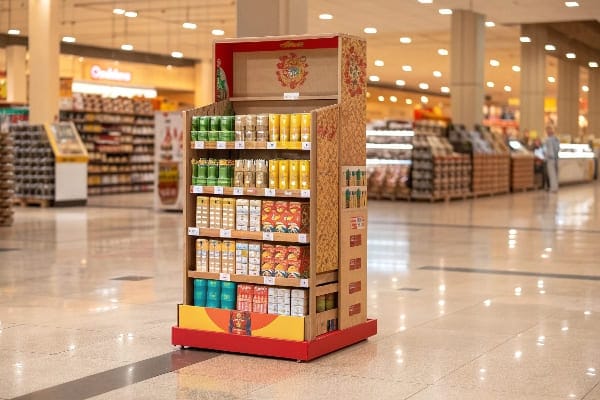
Four Pillars of Effectiveness
| Pillar | Why It Matters | How I Deliver |
|---|---|---|
| Clarity7 | Time is short | One headline |
| Credibility8 | Trust seals deals | Show test rating |
| Convenience | Easy grab | Die-cut handles |
| Durability9 | Protect margin | Triple-wall corrugate |
Story in Seconds
I use the “three-second rule.” If a stranger cannot tell what, why, and cost in that window, layout fails.
Built-in Trials
For Barnett, I anchor a demo bow on a swivel arm. Shoppers feel draw weight. Touch converts.
Hidden Strength
My factory runs edge-crush tests: 42 psi minimum. I show test video on the tablet next to the rack. Proof kills doubt.
How do you display products to attract customers?
I once stacked boxes floor-to-ceiling. Foot traffic dropped; the wall scared buyers. Lesson: form must invite, not intimidate.
Use clear focal points, step-down heights, and open fronts so customers see, reach, and imagine ownership fast.

Step-down Technique10
| Level | Display Height (cm) | Customer Feeling |
|---|---|---|
| Hero | 160 | Eye contact |
| Assist | 120 | Easy grab |
| Stock | 60 | Abundance |
Step creates flow like a staircase. Eyes travel down, hands follow.
Sensory Hooks11
Texture matters. I laminate matte boards so glare dies. Soft touch film hints at grip of a bow handle.
Interactive Edge12
I mount NFC tags. Tap phone, see hunting video. Engagement goes social, free reach.
Funnel and Exit
Arrows lead to price scanner. I position cross-sell items—wax, cases—within arm’s length. Basket value rises.
How do I display my product?
You may run a single kiosk, not a chain. Budget is tight. That is the problem. I felt the same starting Popdisplay.
Start small: a tailored cardboard standee with bold header, clear tiers, and knock-down design for cheap shipping.
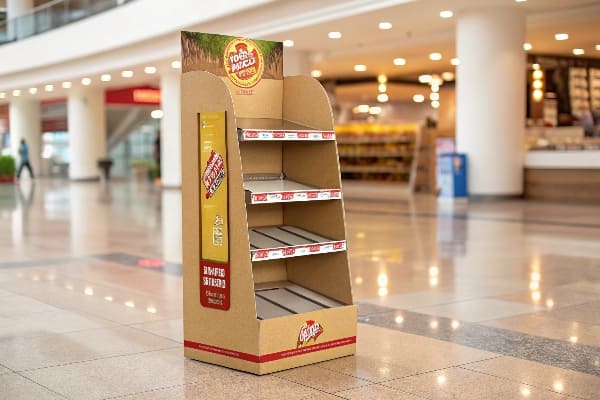
Design in Three Steps
- Define hero SKU13; give it top tier.
- Sketch footprint to fit your van, not the warehouse.
- Print a 3D render14; fix angles before cutting board.
Table: Cost Breakdown
| Component | Cost (USD) | Save Tip |
|---|---|---|
| 28 | Limit colors | |
| Cutting | 12 | Use common die |
| Laminate | 6 | Skip if indoor |
| Assembly | 4 | Flat-pack kit |
Assembly Tricks
I pre-crease folds. Even first-time staff sets unit in five minutes. Lock tabs, no tools.
Reuse Strategy
Panels flip. Swap graphic sheets using Velcro when season changes. One frame, many campaigns—repeat profit.
What is a product display?
Some clients think display equals shelving. Wrong. Definition confusion causes poor briefs.
A product display is a planned arrangement that combines structure, graphics, and placement to trigger purchase behavior.
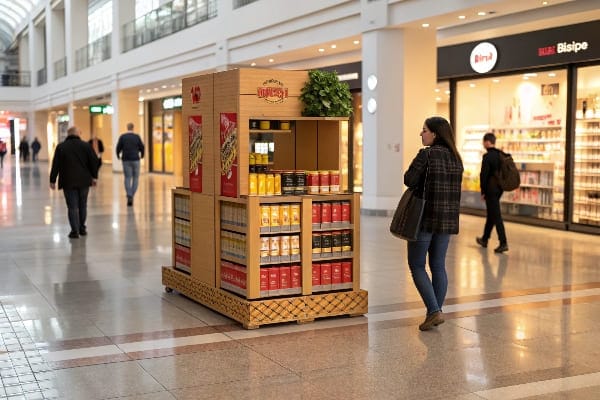
Display Elements
| Element | Role | Example |
|---|---|---|
| Structure | Holds weight | Corrugated tower |
| Graphic | Communicates | UV print of deer hunt |
| Messaging | Directs action | “Draw. Aim. Release.” |
| Placement | Finds attention | End-cap near entrance |
Types Overview
- Temporary: two weeks, promo price.
- Semi-permanent: three months, seasonal.
- Permanent: a year, premium finish.
Life Cycle
I track through four stages: concept, prototype, pilot, scale. Delay at any stage costs shelf window. My factory keeps three lines so pilot and scale overlap.
Metrics
The only success metric is sell-through15. Likes on social feel nice, but pallets shipped tell truth.
Conclusion
Right display edits choice, shares story, and moves boxes. Test often, listen to numbers, and let cardboard speak profit.
Understanding visual hierarchy can enhance your product display strategy, making it more effective in attracting customers. ↩
Learning about color and contrast can help you create visually appealing designs that capture attention and drive conversions. ↩
Exploring social proof can provide insights into how to leverage customer testimonials and reviews to boost sales. ↩
Explore this link to learn how to effectively design a Decompression zone that enhances customer experience and boosts sales. ↩
Discover how applying ergonomic logic can enhance product accessibility and customer satisfaction in retail environments. ↩
Learn about A/B testing strategies that can optimize your retail displays and increase sales through data-driven decisions. ↩
Understanding the significance of clarity can enhance your communication skills and effectiveness in various contexts. ↩
Exploring the role of credibility can help you build trust with your audience and improve your business relationships. ↩
Learning about durability in packaging can help you make informed choices that protect your products and margins. ↩
Explore this link to understand how the Step-down Technique enhances customer engagement and sales in retail environments. ↩
Discover how Sensory Hooks can elevate the shopping experience by appealing to customers’ senses and increasing product interaction. ↩
Learn about the advantages of NFC tags in retail, including increased customer engagement and innovative marketing strategies. ↩
Understanding the concept of a hero SKU can help you prioritize your best products for maximum impact and sales. ↩
Learning about 3D rendering techniques can enhance your design process and improve the accuracy of your prototypes. ↩
Understanding sell-through is crucial for evaluating product performance and inventory management. Explore this link to gain insights into its significance. ↩

